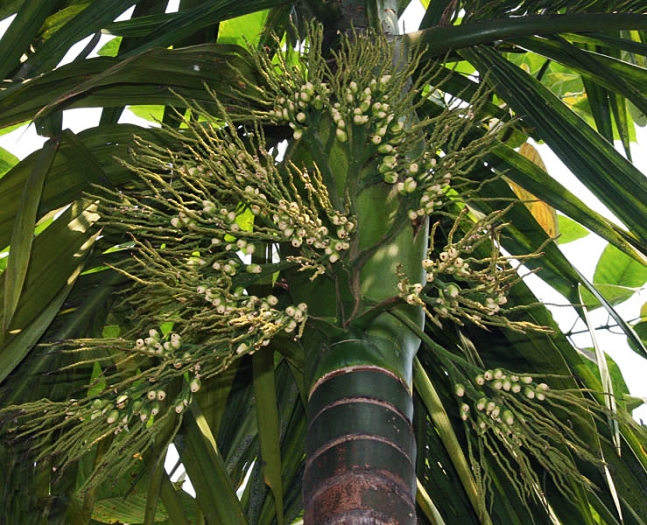Betel Palm
(Areca catechu)
Betel Palm (Areca catechu)
/
/

J.M.Garg
CC BY-SA 3.0













Estimated Native Range
Summary
Betel Palm is valued for its elegant form and is often used in tropical and subtropical landscapes. It is suitable for urban planting, as a specimen tree, and is popular in interior landscaping, especially in large indoor areas such as malls and hotels. However, it will not produce fruit or reach its full size when grown indoors. This palm prefers full sun to partial shade, high humidity, and consistently moist, well-drained soils. It is relatively low maintenance but may require regular watering during dry periods. While it is not known for significant disease issues, spider mites can be a problem when grown indoors. Areca catechu is potentially invasive in some regions, so it is crucial to check local regulations before planting it outside its native range.CC BY-SA 4.0
Plant Description
- Plant Type: Tree
- Height: 30-66 feet
- Width: 7-10 feet
- Growth Rate: Moderate
- Flower Color: N/A
- Flowering Season: Spring, Summer, Fall, Winter
- Leaf Retention: Evergreen
Growth Requirements
- Sun: Full Sun
- Water: Medium
- Drainage: Slow, Medium, Fast
Common Uses
Edible*Disclaimer: Easyscape's listed plant edibility is for informational use. Always verify the safety and proper identification of any plant before consumption., Low Maintenance
Natural Habitat
native to tropical rainforests and coastal regions in Southeast Asia, including the Philippines and Malaysia
Other Names
Common Names: Indian-Nut, Areca Palm, Areca-Nut, Areca-Nut Palm, Catechu, Pinang Palm, Betel-Nut Palm, Betelnut, Betelnuß, Betelpalme
Scientific Names: , Areca catechu, Areca cathecu, Areca macrocarpa, Areca catechu var. silvatica, Areca catechu var. alba, Areca catechu var. batanensis, Areca catechu var. longicarpa, Areca catechu f. communis, Areca catechu var. nigra
GBIF Accepted Name: Areca catechu L.